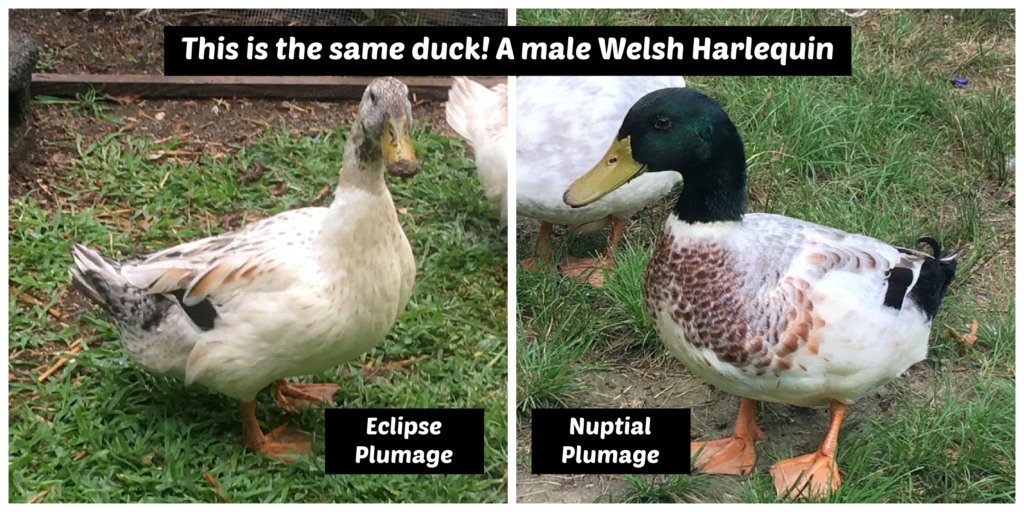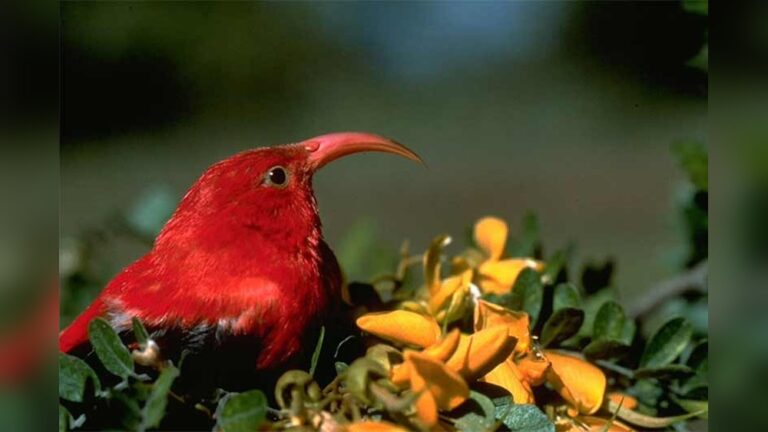How To Tell A Female Duck From A Male
Have you ever watched ducks swimming peacefully and wondered if you could tell a female from a male? It might seem tricky at first, but once you know what to look for, it becomes much easier.
Knowing the difference can make your outdoor adventures more interesting and help you understand duck behavior better. You’ll discover simple, clear ways to spot whether a duck is female or male—no confusing jargon, just straightforward tips you can use right away.
Keep reading, and soon you’ll impress your friends with your duck-spotting skills!

Credit: thecapecoop.com
Physical Differences
Physical differences between female and male ducks help identify their sex easily. These differences mainly show in their feathers, size, and bill shape. Understanding these features makes spotting males and females simple.
Plumage Colors
Male ducks often have bright, colorful feathers. They display shiny greens, blues, or purples to attract mates. Female ducks usually wear dull brown or gray feathers. This helps them blend into nests and stay safe.
Size Variations
Males tend to be slightly larger than females. Their bodies and heads look bigger and stronger. Females appear smaller and less bulky. Size difference is subtle but noticeable once you observe closely.
Bill Characteristics
Male and female ducks have different bill colors or patterns. Males sometimes have brighter or more distinct colors on their bills. Female bills often look plain or have dark spots. These details help tell the sexes apart easily.

Credit: www.wikihow.com
Behavioral Clues
Behavioral clues help tell female ducks from males without focusing on looks. Watching how ducks act reveals key differences. These clues include the sounds they make, their mating actions, and how they guard their space.
Vocalizations
Female ducks often quack loudly and clearly. Their quacks can be frequent and sharp. Male ducks usually make softer, raspier sounds. They rarely quack like females do. Listening to these sounds helps identify their gender.
Mating Displays
Males show off to attract females. They flap wings and stretch their necks high. Some males spin or shake their bodies in water. Females watch quietly and do not perform these displays. These actions are signs of a male duck.
Territorial Actions
Males protect their area from other ducks. They chase away rivals with loud calls and fast moves. Females usually stay near nests and keep calm. Territorial behavior shows which duck is male and which is female.
Seasonal Changes
Ducks change their looks with the seasons. These changes help tell males and females apart. The differences become clear during certain times of the year. Watching ducks through the seasons shows their unique traits. These traits help identify their gender easily.
Breeding Season Traits
During breeding season, male ducks show bright colors. Their feathers become shiny and bold. Males use these colors to attract females. Female ducks stay with duller colors for camouflage. The males also make loud calls to get attention. This season makes it easier to spot males from females.
Molting Patterns
After breeding, ducks go through molting. They lose old feathers and grow new ones. Male ducks often lose bright feathers first. They look similar to females during this time. Females also molt but keep their dull colors. Molting helps ducks stay healthy and ready for new seasons. Watching molting can tell you a duck’s gender too.
Species-specific Signs
Species-specific signs help identify male and female ducks. Each duck species has unique traits. These traits show differences in color, size, and behavior. Knowing these signs makes spotting males and females easier.
Observe the duck closely. Notice the colors and patterns. Listen for sounds. These clues reveal the duck’s gender.
Mallard Differences
Mallard drakes have shiny green heads. Females have brown, mottled feathers. Males show bright yellow bills. Females’ bills are orange with dark spots. Males have a curly tail feather. Females’ tails are straight and plain.
Wood Duck Traits
Male wood ducks display vibrant colors. They have iridescent green heads with white stripes. Females are grayish-brown with white eye patches. Males have red eyes; females have dark brown eyes. Males’ feathers shine in sunlight. Females look dull in comparison.
Teal Identification
Male teals have bold, bright colors. They show striking blue or green wing patches. Females have duller, brownish feathers. Males often have a white stripe on the face. Females’ faces are plain. Male teals have a sharper whistle. Female calls sound softer and quieter.
Practical Tips
Practical tips help you tell a female duck from a male easily. These tips focus on simple ways to spot differences. You can use your eyes, tools, and photos to make identification clear. Try these methods during your next outdoor visit.
Observation Techniques
Start by watching ducks closely from a distance. Males often have brighter colors than females. Females usually have duller feathers for camouflage. Notice the size too; males tend to be bigger. Listen to their calls. Males and females often make different sounds. Quiet, patient observation reveals many clues.
Using Binoculars
Binoculars bring ducks closer without disturbing them. Use binoculars to see feather patterns and colors clearly. Look for bright patches on males, like shiny green heads. Females have more brown and spotted feathers. Binoculars help spot small details that the naked eye misses. They make field identification easier and more accurate.
Photographic Identification
Take pictures of ducks to study later. Photos help compare colors and feather shapes carefully. Use a zoom lens to get close-up shots without scaring ducks. Check photos for size, bill shape, and feather marks. Review images to confirm if the duck is male or female. Photography is a useful tool for slow, detailed study.

Credit: www.wikihow.com
How Smart Pets Lover Can Help You with How To Tell A Female Duck From A Male
Learning by Observing: Bringing Duck Identification to Life
Understanding how to tell a female duck from a male isn’t just about spotting physical differences or noting seasonal changes—it’s an opportunity for hands-on learning that deepens your connection with nature. By observing behavioral clues, such as vocalizations and courtship rituals, you engage with the ducks’ personalities, making the experience both educational and emotionally rewarding.
Species-specific signs add another layer, encouraging curiosity and research that enrich your knowledge. Whether you’re a backyard enthusiast or a family looking to introduce children to wildlife, taking time to watch and identify these traits fosters patience and a sense of wonder.
- Keep a simple journal to track what you notice over time.
- Use binoculars to observe subtle differences without disturbing the ducks.
- Connect with local wildlife experts or online communities for shared insights.
At Smart Pets Lover, we believe every chirp and quack tells a story worth learning. If you have questions or want to share your observations, feel free to reach out via our contact page. Embracing these practical moments can turn your duck-watching into a meaningful adventure, building both knowledge and compassion.
Frequently Asked Questions
How Can You Identify A Female Duck Visually?
Female ducks usually have mottled brown feathers. Their coloring helps them blend into surroundings. They lack the bright, iridescent colors often seen in males.
What Are The Key Differences In Duck Vocalizations?
Female ducks generally quack louder and more frequently. Male ducks produce softer, raspier sounds. Listening to their calls helps distinguish their gender.
Do Male And Female Ducks Have Different Behaviors?
Yes, females tend to be more protective and nurturing. Males often display more territorial and courtship behaviors. Observing actions can aid in gender identification.
Are There Size Differences Between Male And Female Ducks?
Male ducks are typically larger with broader bodies. Females tend to be smaller and more streamlined. Size comparison can help tell them apart.
Conclusion
Telling a female duck from a male is easier than you think. Look at their colors and sounds closely. Males often have brighter feathers and louder quacks. Females tend to have duller colors and softer calls. Watching their behavior can also help you tell them apart.
Practice observing ducks in different settings. Soon, you will spot the differences quickly and with confidence. This skill makes watching ducks more fun and interesting. Keep these simple tips in mind next time you see ducks. It will make your experience better every time.






